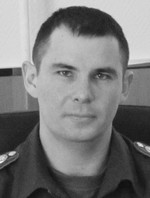Basic applied professional physical qualities building in cadets of fire rescue academy
Фотографии:
ˑ:
Fizicheskaya kultura: vospitanie, obrazovanie, trenirovka №3-2017, pp.77-79
Applicant A.V. Makarov1
Dr.Hab., Professor V.V. Ponomarev2
1Siberian Fire and Rescue Academy of the State Fire Service of the Ministry of Emergency Situations of Russia, Krasnoyarsk
2Siberian State Aerospace University named after academician M. F. Reshetnev, Krasnoyarsk
The study profiled the process of the basic applied professional physical qualities building in cadets of the Fire Rescue Academy on a yearly basis and for the whole academic training period, and identified a few applied professional physical qualities that generally show a sagging trend for the academic education period. The study gave the means to develop a few modules of conditioning special physical practices to correct the applied professional physical qualities that tend to fall for the academic education period, with the relevant updates to the valid education curriculum.
The programmatic practical physical conditioning modules were proved beneficial and recommended for application in the standard education and training curricula of the Fire Rescue Academy to keep the applied professional physical qualities and skills of the cadets at the required levels.
Keywords: cadets of Fire Rescue Academy, applied professional training system, educational process analysis, basic psychophysical qualities building process.
References
- Burok L.V. Issledovanie effektivnosti fizicheskogo vospitaniya s professionalnoy napravlennostyu v proftekhuchilishchakh. Avtoref. dis. kand. ped nauk [Study of efficiency of professional physical education in vocational schools. PhD diss. abstract]. Leningrad, 1997, 22 p.
- Vilenskiy M.Y. Fizicheskaya kultura v professionalno-tselostnykh orientatsiyakh studentov i protsess ikh formirovaniya [Physical education in professionally holistic orientations of students and their building process]. Teoriya i praktika fiz. kultury, 1991, no. 11, pp. 27-30.
- Demesh V.P., Moskalenko I.S., Perevoznikova N.I. Formirovanie professionalnoy kompetentnosti studentov-stroiteley sredstvami sportivnykh i podvizhnykh igr [Formation of professional competency of student-builders using team and outdoor games]. Teoriya i praktika fiz. kultury, 2015, no. 9, pp. 23-24.
- Krivtsun V.P. Professionalnaya napravlennost zanyatiy fizicheskimi uprazhneniyami inzhenerno-tekhnicheskikh rabotnikov. Avtoref. dis. kand. ped. nauk [Professional orientation of physical exercises of engineers and technicians. PhD diss. abstract]. Moscow: ARSRIPC publ., 1988, 26 p.
- Makarov A.V., Ukolov A.V., Ponomarev V.V. Nauchno-pedagogicheskie osnovy formirovaniya professionalno-prikladnoy fizicheskoy podgotovlennosti kursantov pozharno-spasatelnoy akademii [Applied professional physical fitness training at fire-rescue academy: research and educational fundamentals]. Fizicheskaya kultura: vospitanie, obrazovanie, trenirovka, 2016, no. 4, pp. 21-24.
- Melnichuk A.A., Ponomarev V.V. Fizkulturno-sportivnaya deyatelnost studentov v vuze: teoreticheskie i prakticheskie osnovy [Physical education and sports activities of students in university: theoretical and practical basics]. Krasnoyarsk: SibSTU publ., 2013, 172 p.
- Ponomarev V.V., Lagunov A.N., Zhernakov D.V. Narodnye igry v professionalno – prikladnoy fizicheskoy podgotovke kursantov pozharno-spasatelnoy akademii [National games in professional practical physical training of cadets of fire and rescue academy]. XI Mezhdunar. nauch.-prakt. konf. «Aktualnye problemy fizicheskoy kultury, sporta i turizma» [Proc. XI Intern. res.-pract. conf. "Actual problems of physical culture, sports and tourism"], BSPU, Ufa, 2017, pp. 179 -184
- Khakunov N.Kh., Shram V.P. Ot professionalno-prikladnoy fizicheskoy podgotovlennosti – k formirovaniyu professionalno-prikladnoy fizicheskoy kultury [From professional practical physical fitness to applied professional practical physical culture building]. Teoriya i praktika fiz. kultury, 2006, no. 3.



